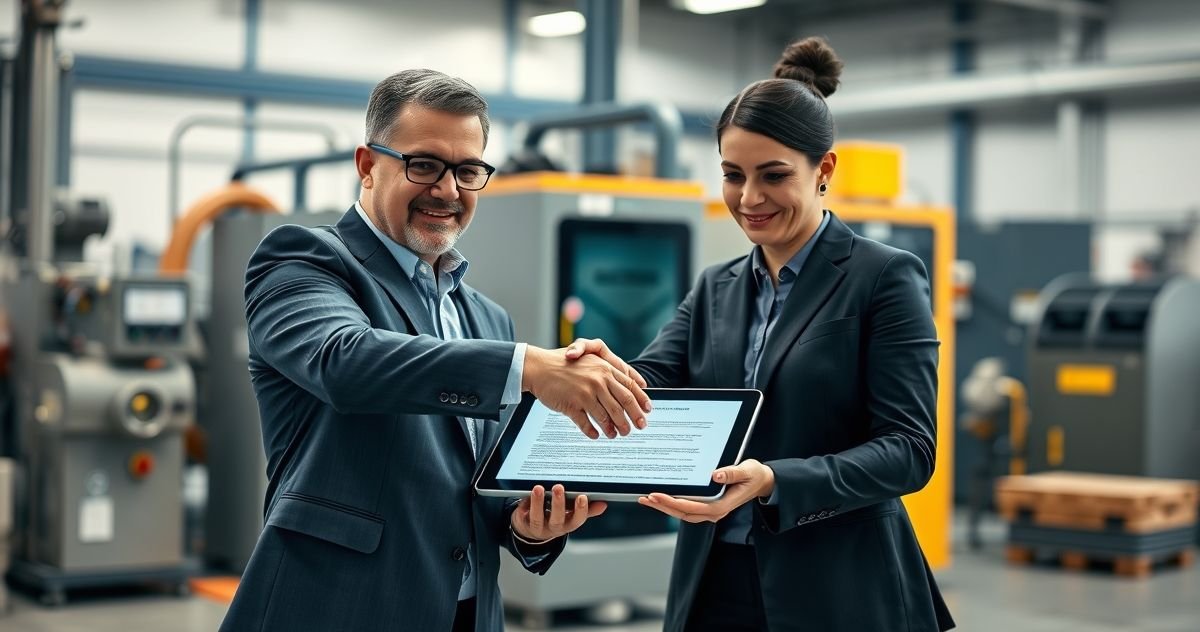How the Equipment Financing Process Works
The journey to acquiring equipment through financing is straightforward because the loan is self-secured. The asset you are purchasing serves as the collateral, which reduces the lender’s risk and simplifies the approval process.
Here are the typical steps:
- Get a Quote: First, identify the specific equipment your business needs and get a formal price quote from a vendor.
- Apply for Financing: Submit the quote along with your loan application to a lender, which could be a traditional bank, credit union, or an online lender specializing in business loans. The lender will review your business’s financial health, including revenue and credit history.
- Receive Funding: Upon approval, the lender typically pays the vendor directly or provides you with the funds to complete the purchase.
- Repay the Loan: You will make regular payments (usually monthly) that cover both the principal and interest over a predetermined loan term, which often ranges from two to seven years.
- Gain Full Ownership: After your final payment, you own the equipment outright.
Key Benefits of Equipment Financing
This funding method offers several distinct advantages for businesses needing to acquire physical assets.
- Preserves Cash Flow: Instead of a large upfront cash expenditure, financing allows you to spread the cost over time, freeing up capital for other operational needs like marketing or payroll.
- Easier Qualification: Since the equipment itself secures the loan, these loans are often easier to obtain than unsecured business loans, even for newer businesses or those with less-than-perfect credit.
- Builds Business Credit: Making timely payments on an equipment loan can help strengthen your business’s credit profile, making it easier to qualify for other types of financing in the future.
Equipment Financing vs. Equipment Leasing: What’s the Difference?
It’s crucial to distinguish between financing and leasing, as they serve different purposes.
- Equipment Financing is comparable to an auto loan; you are borrowing money to buy the asset. At the end of the loan term, you own it. This is ideal for equipment with a long useful life, like a commercial oven or a construction vehicle.
- Equipment Leasing is essentially a long-term rental. You pay a monthly fee to use the equipment. At the lease’s end, you may have the option to return it, renew the lease, or buy it. Leasing is often preferred for technology that quickly becomes obsolete, such as computers or servers.
Tax Advantages Under Section 179
A significant benefit of equipment financing is a potential tax deduction under Section 179 of the U.S. tax code. According to the IRS, this provision allows businesses to deduct the full purchase price of qualifying new or used equipment in the year it is placed into service.
For example, if you finance a $25,000 delivery truck, you may be able to deduct the full $25,000 from your taxable income for that year, which can substantially lower your tax liability.
Disclaimer: Tax laws are complex. Always consult with a qualified tax professional to confirm eligibility and understand how Section 179 applies to your specific business situation.
Examples of Industries That Use Equipment Financing
This type of loan is a vital tool across numerous sectors:
- Construction: To purchase excavators, bulldozers, and cranes.
- Restaurants & Food Service: For commercial ovens, refrigerators, and point-of-sale (POS) systems.
- Healthcare: To acquire medical imaging machines, dental chairs, and diagnostic tools.
- Transportation & Logistics: For financing commercial trucks, trailers, and delivery vans.
- IT & Technology: To buy high-end servers, networking hardware, and specialized computers.
Frequently Asked Questions (FAQs)
1. Can I finance used equipment?
Yes, most lenders offer financing for both new and used equipment. However, the loan terms, such as interest rate and repayment period, may be different for used assets, as their value and lifespan can be harder to assess.
2. What credit score is needed for equipment financing?
While requirements vary by lender, a personal FICO score of 620 or higher is often a good starting point. Lenders will also consider your business’s revenue, time in business, and the type of equipment being financed. Learn more about how your credit score impacts financing.
3. What are typical interest rates for equipment loans?
Interest rates can range widely, typically from 6% to over 30%, depending on your creditworthiness, business history, loan term, and the equipment’s value. Businesses with strong credit and financials will qualify for lower rates.



